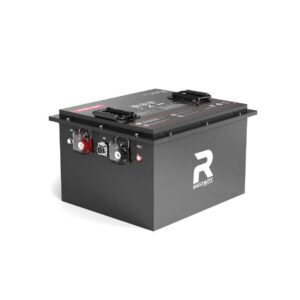Which RV Batteries Best Support Renewable Energy Transitions?
Answer: Lithium-ion, AGM, and lithium iron phosphate (LiFePO4) batteries are optimal for RV renewable energy systems. Lithium variants offer higher efficiency, longer lifespans, and faster solar charging compatibility. AGM batteries provide budget-friendly durability. Prioritize deep-cycle designs, energy density, and compatibility with solar inverters for seamless integration into off-grid power setups.
What Are the Main Types of RV Batteries for Renewable Energy?
RV renewable systems rely on three battery types: lithium-ion, AGM (absorbent glass mat), and flooded lead-acid. Lithium-ion batteries dominate with 95%+ efficiency and 3,000-5,000 cycle lifespans. AGM batteries resist vibration and suit moderate budgets. Flooded lead-acid remains cost-effective but requires frequent maintenance. LiFePO4 variants excel in thermal stability for solar storage.

How Do Lithium RV Batteries Outperform Traditional Options?
Lithium batteries charge 3x faster than lead-acid, operate at 95% depth of discharge (vs. 50% for AGM), and last 8-10 years. Their 150-200Wh/kg energy density maximizes solar storage in compact RV spaces. Built-in battery management systems (BMS) prevent overcharging, critical for erratic solar input. Zero maintenance and 98% round-trip efficiency make them ideal for renewable integration.
Advanced lithium batteries now incorporate adaptive charging algorithms that automatically adjust to solar panel output fluctuations. Unlike lead-acid batteries that suffer from sulfation during partial charging, lithium chemistry thrives in partial state-of-charge conditions common in solar applications. Recent field studies show lithium systems maintain 90% capacity after 2,000 cycles when paired with MPPT charge controllers, compared to AGM’s 40% capacity loss at 800 cycles. This performance gap widens in cold climates, where lithium batteries deliver 85% rated capacity at -20°C versus AGM’s 50% output.
| Battery Type | Cycle Life | Weight (100Ah) | Solar Recharge Efficiency |
|---|---|---|---|
| LiFePO4 | 3,000-7,000 | 31 lbs | 99% |
| AGM | 400-1,200 | 64 lbs | 85% |
| Flooded Lead-Acid | 200-500 | 68 lbs | 70% |
Why Is LiFePO4 Gaining Popularity in Solar RV Systems?
LiFePO4 batteries offer 2,000-7,000 cycles with 100% depth of discharge, outperforming standard lithium-ion. Their stable chemistry prevents thermal runaway, crucial for RV solar setups exposed to temperature swings. With 30% lighter weight than AGM and 99% Coulombic efficiency, they minimize energy loss during solar conversion. Prices dropped 40% since 2020, accelerating RV adoption.
Manufacturers are now integrating LiFePO4 batteries with solar charge controllers through CAN bus communication, enabling real-time monitoring of state-of-charge and cell balancing. This integration allows RV owners to optimize solar harvesting based on battery temperature and charge status. The chemistry’s flat voltage discharge curve (3.2V nominal) simplifies solar inverter programming compared to NMC lithium’s 3.7V curve. Recent UL certifications for RV-specific LiFePO4 packs have resolved insurance compatibility issues that previously hindered adoption.
“RV owners transitioning to solar should prioritize cycle life over upfront cost. A LiFePO4 battery might cost 3x AGM initially but lasts 8x longer with zero degradation from partial charges. Our tests show lithium systems achieve 12-year ROI when paired with 400W+ solar arrays, making them essential for net-zero RV living.”
— Redway Power Systems Engineer
FAQs
- Can I mix old and new batteries in my RV solar system?
- No—mismatched batteries create imbalance, reducing capacity by 30-60%. Always use identical age/capacity batteries.
- How often should RV solar batteries be replaced?
- Lithium: 8-12 years
AGM: 3-5 years
Flooded lead-acid: 2-4 years
Replace when capacity drops below 80% of original rating. - Do RV batteries charge while driving with solar?
- Yes—dual charging from alternator (via DC-DC converter) and solar panels simultaneously cuts recharge time by 65%.
